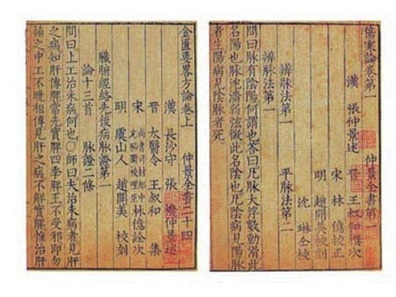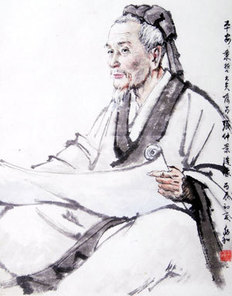Welcome to OM Points Acupuncture & Oriental Medicine
Natural Care for Your Health and Well-Being
Acupuncture
Chinese Herbal Medicines
Together, we look within ourselves to find peace and love and become aware that we all hold the
power to achieve harmony in our body, soul, and spirit.
We consciously make the positive thoughts and focus on feeling good,
thus becoming more peaceful & loving as who we are and with others around us. Hence, we are truly happy.
Acupuncture
Chinese Herbal Medicines
Together, we look within ourselves to find peace and love and become aware that we all hold the
power to achieve harmony in our body, soul, and spirit.
We consciously make the positive thoughts and focus on feeling good,
thus becoming more peaceful & loving as who we are and with others around us. Hence, we are truly happy.
History of Acupuncture:
Acupuncture is one of the earliest forms of healing, dating back 5000 years, utilizing needles to provide relief of pain and other common ailments. In its infancy, sharpened stones were used to apply pressure in specific areas of the body. Over time, stones gave way to bones and finally, to hair-thin needles.
The early records, going back to Shang dynasty (1000BC), doctors of Chinese medicine held discussions of medical disorders, recorded illnesses and their treatments. In the Han Dynasty (206 BC) the basics of Chinese medical theory were established including the concepts of relation between Yin and Yang, the channel theory, acupuncture needling methods and sophisticated pharmacopeia.
In the 6th century practice of Chinese medicine and acupuncture was introduced to Korea and Japan and with time, developed their own variations of Oriental medicine. In 1026 AD during the Song Dynasty, a complete illustrated manual and Bronze Figure depicting all acupuncture and moxibustion points of the 14 channels, was compiled.
During the Ming Dynasty (1450 AD) in China, the advancement of Acupuncture progressed into a true healing discipline, including written books on the topic, improvement of techniques, and the development of Moxa sticks to apply heat.
In the early 20th century China began to see an explosion in population and practicing Acupuncturists were in high demand, therefore the use of Western medical techniques became popular, while the practice of Acupuncture faded from the mainstream forms of healing techniques. Acupuncture was banned in cities when Chang Khi Chek took power in 1932. Just 13 years later, when Mao Tse Tung closed the doors to China and Western society, including medical practice, Acupuncture was restored to its honored place in Chinese medicine.
During the late 20th century Acupuncture was introduced into Western civilization as the Chinese government once again opened its doors to the rest of the world in 1972. Acupuncture was revealed to the West in a grand way when New York Times journalist, James Reston, had an emergency appendectomy while in China and acupuncture was used as the anesthetic. He later wrote about his experience in the Times and interest piqued among American medical practitioners.
The early records, going back to Shang dynasty (1000BC), doctors of Chinese medicine held discussions of medical disorders, recorded illnesses and their treatments. In the Han Dynasty (206 BC) the basics of Chinese medical theory were established including the concepts of relation between Yin and Yang, the channel theory, acupuncture needling methods and sophisticated pharmacopeia.
In the 6th century practice of Chinese medicine and acupuncture was introduced to Korea and Japan and with time, developed their own variations of Oriental medicine. In 1026 AD during the Song Dynasty, a complete illustrated manual and Bronze Figure depicting all acupuncture and moxibustion points of the 14 channels, was compiled.
During the Ming Dynasty (1450 AD) in China, the advancement of Acupuncture progressed into a true healing discipline, including written books on the topic, improvement of techniques, and the development of Moxa sticks to apply heat.
In the early 20th century China began to see an explosion in population and practicing Acupuncturists were in high demand, therefore the use of Western medical techniques became popular, while the practice of Acupuncture faded from the mainstream forms of healing techniques. Acupuncture was banned in cities when Chang Khi Chek took power in 1932. Just 13 years later, when Mao Tse Tung closed the doors to China and Western society, including medical practice, Acupuncture was restored to its honored place in Chinese medicine.
During the late 20th century Acupuncture was introduced into Western civilization as the Chinese government once again opened its doors to the rest of the world in 1972. Acupuncture was revealed to the West in a grand way when New York Times journalist, James Reston, had an emergency appendectomy while in China and acupuncture was used as the anesthetic. He later wrote about his experience in the Times and interest piqued among American medical practitioners.
An eminent Chinese Physician to the development of Traditional Chinese Medicine -
Zhang Zhongjing (張仲景), was one of the finest Chinese physicians in history and extremely well known in modern Chinese medicine. Zhang's masterpiece, "Shang Han Za Bing Lun" (傷寒雜病論), was later compiled into two classics – (Shang Han Lun, 傷寒論 – discussion of cold induced disease) and (Jing Gui Yao Lun, 金匮要略 – Synopsis of Prescriptions of the Golden Chamber). These works are still referenced today for the diagnosis, treatment, and differentiation of yin-yang and 6 stages. Chinese Medicine is a branch of the Taoist healing arts which include Acupuncture, Herbology, Tai Qi, Meditation, Qi Gong, Astrology, I-Ching, and Geomancy (Feng-Shui), etc.






